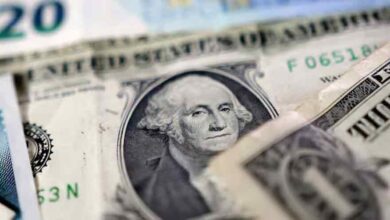LONDON: Oil tumbled nearly 4% as a potential US-Iran nuclear deal raised the prospect of increased global crude supply on Thursday, while stocks markets took a well-earned breather following their weeks-long recovery run.
Brent futures dropped over $2 to under $64 a barrel as US President Donald Trump, who is on a Middle East tour, said he was getting very close to securing a deal with Iran – and that Tehran had “sort of” agreed to the terms.
Ali Shamkhani, an adviser to Iran’s Supreme Leader Ayatollah Ali Khamenei, had said in an NBC interview that the country would commit to never making nuclear weapons and get rid of its stockpiles of highly-enriched uranium.
Iran is OPEC’s third largest producer. It pumps around 3 million barrels of oil per day (bpd), or around 3% of total world output, but has been under strict sanctions since Trump quit the West’s previous nuclear accord with Tehran in 2015.
It was not just Brent that was impacted. Europe’s oil and gas stocks SXPE toppled back nearly 2%, while government bonds of rival producers from Angola to Nigeria also took a hit.
BNP Paribas economist Paul Hollingsworth said the drop in oil compounded the deflationary pressures already in play in places like Europe amid lingering US trade tariff worries.
“Everyone is finding it difficult to navigate the volatility in the announcements,” Hollingsworth said.
Key questions are now whether the trade war continues to moderate, how much pain has been caused and whether the volatility has driven a structural shift away from US assets and the dollar.
“Clearly we are in a better state of the world than we were a few weeks ago, but we do think that some damage has been done,” Hollingsworth said.
The dive in crude nudged both the dollar and benchmark government bond yields, a proxy for national borrowing costs, down.
Official figures showed Britain’s economy grew by a better-than-expected 0.2% in March. Traders are also awaiting euro zone flash GDP figures for Q1 and key US data including April retail sales and jobless figures.
Germany’s 10-year yield, the euro area’s benchmark, was down one basis point to 2.68%, but remained close to a multi-week high of 2.7% hit on Wednesday.







